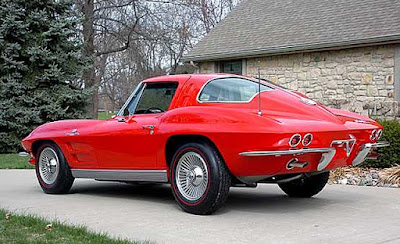I am having trouble determining which came first - the 416 with a headboard or the one without. I am beginning to think it might have been simpler had I considered chickens and eggs!
Usually people like QDT can be relied on for some assistance. This time, however, they contradict themselves or even have a member of staff who seemed to think one might have been a 416S missing some elements!
The first one they say is an early variation. The second is a late version. That was a great help, folks.
I tried another Andrew, the Little Wheels chap who is also a real Land Rover enthusiast but he merely says we can find both versions.
Looking for images of the real thing, I didn't see as many as I'd expected. What is clear, though, is that almost all the earliest Land Rovers (judging by the registrations) don't have a headboard which only begin to appear with the early 1960s Land Rovers.
So that leads me to think that Corgi would have been looking at the 1950s Land Rovers without a headboard when they were putting the plans for the model together. This would also have been a much simpler and cheaper addition to the catalogue requiring only some different paint and a few transfers.
At this point I was heavily leaning towards the 'No headboard' version being the first issue which would have appeared in August 1959.
Then I looked at the 1959 catalogue. This is the image that the artist drew.
Yes, it's got the headboard. Now this would have been drawn way back in 1958 sometime as catalogues invariably were drafted a long time ahead of printing so he or she would have probably been looking at a pre-production model. This is, though, pretty strong evidence for the headboard version being the first issued. If the pre-production model had it then one would assume it would have been included in the process.
The 1960 catalogue still has the headboard too and, as I don't think this is a copy of an earlier image, the new drawing would now be likely to be based on the actual model.
Wheels can be confusing, especially when people talk of 'spun' hubs. The word spun is the past participle of spin so it is reasonable to interpret that as a wheel that might spin freely on its axle. Unfortunately it relates in this instance to the production process that creates the dished and slightly more realistic-looking surface and all 416 models have fixed wheels. I call them smooth and shaped. I am pretty sure that the smooth type is the earliest but at some stage the shaped type starts to be used but I have seen examples of both variations of the RAC Land Rover with both types of fixed wheel too so that doesn't help us decide either.
The two above are mine with flat, smooth wheels. Below are a couple from QDT which each have the later shaped wheels.
Had you consulted Vectis, by the way, then you could have been completely led astray with one recent item they had up for auction, showing a 416 with headboard and a 416S box which clearly illustrates the 416!!
Maybe some other model makers can help. Here is the Budgie model that was released in 1963. So just as Corgi issue their 416S without a headboard (and, thank Heavens, it never does get one!) Budgie are issuing their version with a headboard.
I was about to give up and go back to wondering who you'd call if you broke down in Kazakhstan on a Saturday morning when I looked again at the boxes.
Scroll up again and look at the two 416 boxes. The No headboard editions all seem to have been supplied in temporary boxes with no picture and with a separately printed number and title on the end. The with headboard edition have the normal illustrated box. Looking around, all the examples of no headboard Land Rovers appear with the temporary boxes.
In my mind, this confirms my original opinion that the very first 1959 editions were those without a headboard and sometime later that year the illustrated boxes come out with the headboard edition inside.
The transition to 416S came in December 1962 and this is a simple, normal 438 type Land Rover with just a hole for an aerial and some different paintwork and blue plastic canopy. This would have been relatively easy to produce along with all the other revised Land Rovers that came out at around this time. The 1963 Catalogue shows the revised image. It isn't quite right as it shows the old style of bumper but, again. this would have been drawn sometime before the actual model was issued so was probably the artist's best guess or even just an update of his or her old image from a few years ago!
My collector friend in Eilum, Germany, has just acquired a really nice 416 without a headboard for a crazily cheap price and asked the question. I have to admit that I really don't know the answer for sure. Maybe some other reader will?
There are good cases to be made for both.












































